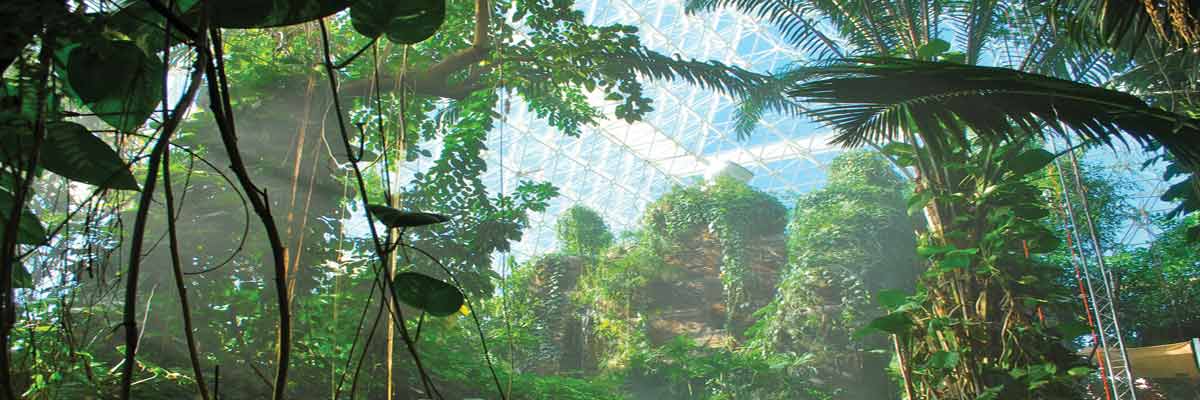Biosphere 2, Meet the Second Law of Thermodynamics
My graduate school advisor, Charles Hall, is a very intelligent man, though he frequently defers to his doctoral advisor’s talent and knowledge. Howard Odum explained the first and second laws of thermodynamics concisely and in a manner easy to understand:
The quantity of energy within a system is maintained (first law). However, the quality of that energy degrades over time (second law).
Entropy is defined as
a function of thermodynamic variables, as temperature, pressure, or composition, that is a measure of the energy that is not available for work during a thermodynamic process. A closed system evolves toward a state of maximum entropy.
or, over time, a system evolves from a state of order (low entropy) towards disorder (high entropy).
Why the rudimentary physics review? Well, I came across a series of photos of the Biosphere 2 project by Noah Sheldon (BLDGblog, via boing boing), which in my mind, embodies the concept of entropy.
Biosphere 2 was designed to test man’s ability to construct, maintain and live in a completely isolated biosphere to research and develop space colonization technology. From b2science.org:
Two missions, between 1991 and 1994, sealed Biospherians inside the glass enclosure to measure survivability. Behind this highly public exercise was useful research that helped further ecological understanding.
A more detailed history of the site and its missions can be found here.
March 27, 1992—Six months into its two-year closure, the Biosphere 2 crew surpassed its first major milestone and set several world records—living inside closed ecological life support system longer than any predecessor…
April 24-27, 1992—Space Biospheres Ventures hosted the Third International Workshop on Closed Ecological Systems. Presentations and workshops were given by more than 30 different participants representing universities, research institutions, and government agencies from Russia, Europe, Japan and the United States. The symposium explored the dynamics and modeling of carbon dynamics in natural and engineered ecosystems underlining the potential importance of carbon research in Biosphere 2 in our understanding of issues involved in global warming.
I was a teenager in high school when Biosphere 2 was constructed and the experiments were carried out. I remember hearing about it in science class and on the news. At my age in the 1990s, the dream of colonizing the moon or Mars seemed entirely possible. Unfortunately, the project suffered numerous setbacks, including declining oxygen levels, the “extinction” of many species – while others grew rampant, high nutrient levels in the water, and an unsafe build up dinitrogen oxide in the atmosphere. Approximately 18 months into the experiment, oxygen had to be pumped into the closed system in order for the experimenters to remain for the full 2 year stay. Politics and personal differences led to the project’s closure.
Today what remains is a picture of entropy (and a dose of humility). From order to disorder. A noble experiment to determine the limits of human sustainability, now a stark reminder of the human dependence on the other species on Earth, and the vast amount of energy required to maintain a “world” habitable for humans.







